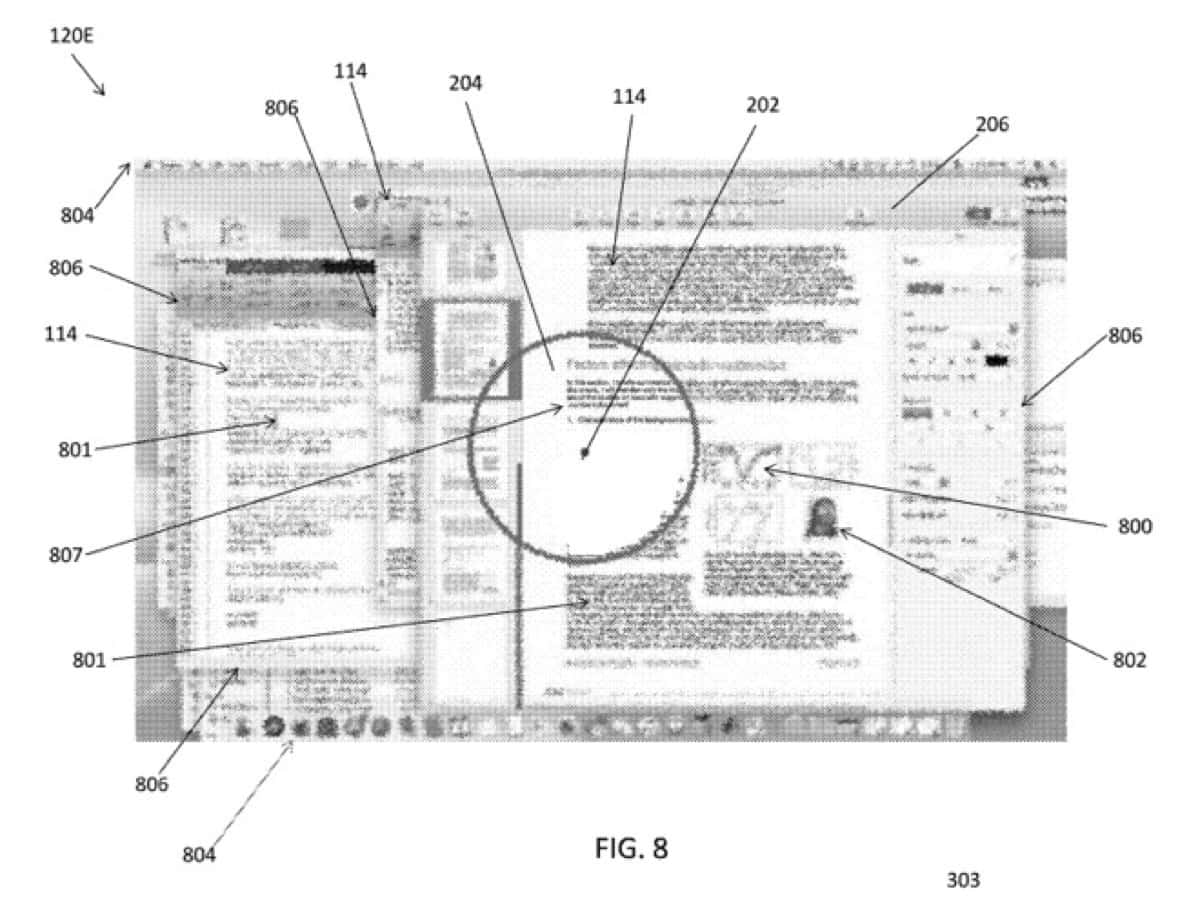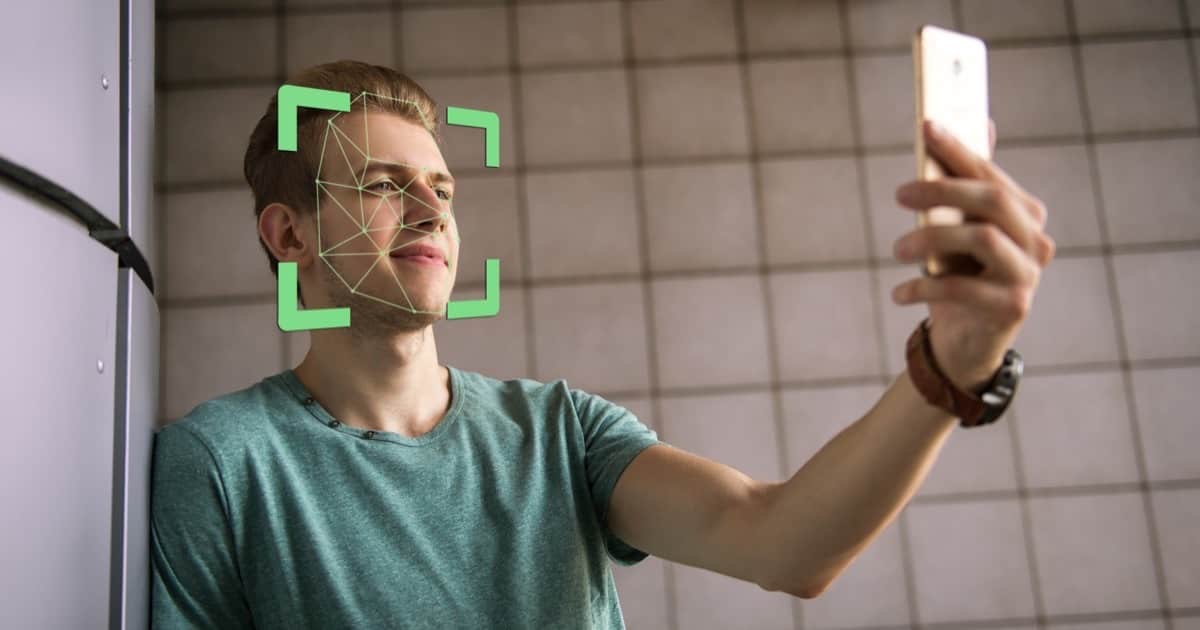A patent published today by Apple reveals technology called “gaze-dependent display encryption” whereby the display would show real data to its owner and fake data to anyone else looking at the screen.
Gaze-Dependent Display Encryption
Using the device’s front-facing camera, it could track its owner’s eyes to figure out where he/she may be looking on the screen. In that area, the device would display the real contents there. But others looking at the screen would show fake information as a privacy measure.
Each display frame that is displayed on the electronic device display may include a clear-display region around the user’s gaze location and an obscured region outside the clear-display region. In this way, only the display content that the user is actively viewing is recognizable and understandable and an onlooker such as an unwanted observer looking over the user’s shoulder is unable to understand what is displayed.

The fake content could even look similar to the real content, but be unreadable. The TrueDepth camera on the iPhone X and later already have eye tracking for its Face ID Attention Awareness feature.
Further Reading
[How Worried Should You Be About Public USB Charging Stations?]
